
When J. Crew debuted their Liquor Store ten years ago, they transformed an after-hours watering hole into a menswear-only boutique laden with 1960s-era references to traditional masculinity. Dimly lit rooms were covered in plush leather chairs, oriental rugs, and wood paneling. In the corner of one area, a bookshelf was stacked with Strand-issued classics — Kerouac, Hemingway, and Cheever among them. Thick cashmere cardigans were draped over Globetrotter suitcases; striped rep ties rolled into lowball glasses. In another area, J. Crew showcased their collection of Red Wing heritage work boots. Once made for loggers, carpenters, and longshoreman, the preppy clothier has since helped mainstream these blue-collar styles into white-collar offices.
A few years ago, I had the chance to interview Frank Muytjens, then the head of menswear design at J. Crew. We talked about his design process, his love for vintage, and how he chooses which third-party brands get included in J. Crew’s much-revered “In Good Company” section, which is where many American men first get introduced to storied names such as Barbour and Alden. When it came to Red Wing, Muytjens said plainly: “I saw them in Chelsea.” Chelsea, for those unaware, is Manhattan’s art district. It’s home to expensive art galleries, hip rooftop bars, and one of the city’s largest LGBTQ communities. Muytjens continued: “Red Wings were popular with lesbians there. I just loved how they wore them with slim jeans and plaid flannel shirts, so I helped to bring the brand into J. Crew.”
Anna Pulley, the author of The Lesbian Sex Haiku Book (with Cats!), says about as much in the opening of Articles of Interest’s second podcast episode. When she moved from the Midwest to San Francisco, she didn’t know who to hit on anymore because the language of unspoken dress codes had changed. Where Pulley’s from, some women style their plaid flannels in a way to show they’re part of a group, but in San Francisco, where every office looks like a sawmill, they’re just part of a middle-class uniform. “Midwestern queer culture is extremely different from Bay Area queer culture, and one of the things that stood out to me was the difference in fashion,” she says. “Flannel was one way to signify, like, I exist.” Now when she sees someone wearing a plaid flannel shirt, she wonders if they’re a bike messenger.
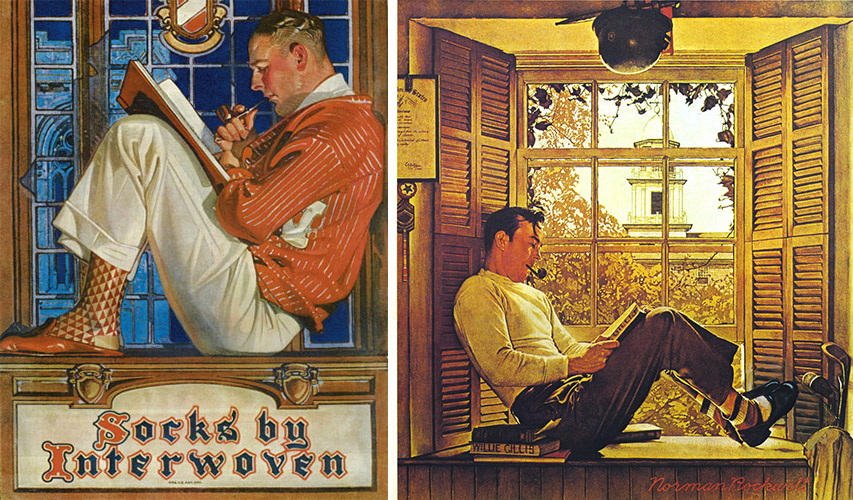
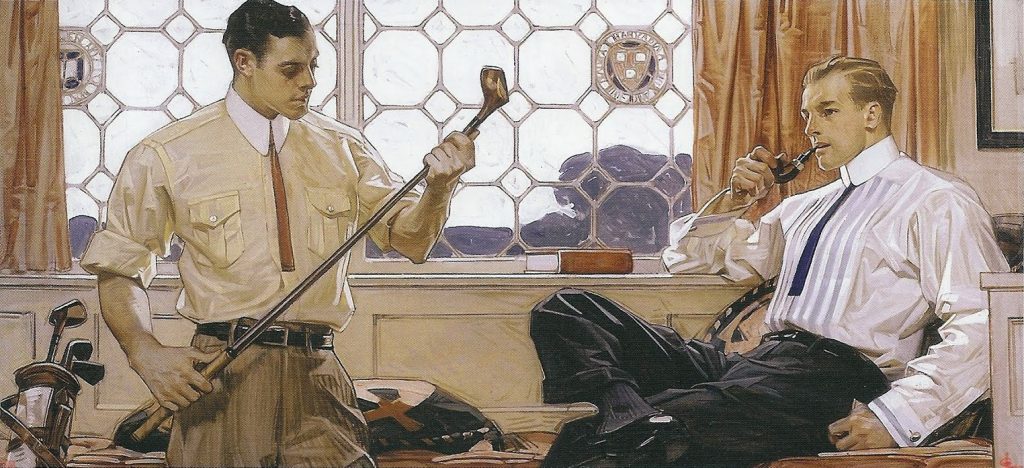
The Dress Codes of a Subcultural Habitat
The urban lumberjack uniform took off in the early 2000s thanks in part to hipster culture. Although it’s often billed as a classic, it’s really a new invention. The pieces are generally timeless, but they come together in a way that shows the fit and styling are more about broadcasting identity than performing manual labor. At some point, the look was picked up by a segment of the LGBTQ community, where it took on new meaning. And it was through that community that a J. Crew designer fell in love with how an old boot style could be worn in new ways.
This isn’t the first time this has happened. The border between the queer community and popular fashion is porous. The first will often take things from broader culture, remix it, and make something their own. Then the more general public will adopt a look once it’s reintroduced as fashionable (and then, the original in-group meaning is lost). The urban lumberjack look is also one of the many examples of how gay men and lesbians have used clothing as a way to navigate a challenging world. To be sure, people from all backgrounds use fashion to try on different identities, explore their sexualities, find community, and announce their orientation, but clothing is even more critical for people in the LGBTQ community.
“The illegality of homosexuality and the moral disapproval it attracted forced gay men and lesbians to live virtually invisible lives in Britain, North America, and much of the world,” writes Shaun Cole, an Associate Professor in Fashion at Winchester School of Art and author of Don We Now Our Gay Apparel. “Up until the gay liberation movement of the late 1960s, the most important criterion of public dress, for the mass of gay men and lesbians, was to be able to ‘pass’ as heterosexual. Despite this need, many were aware of the dress codes and items that could be used to signal sexual orientation.”
These signals were often so subtle, they passed undetected by outsiders. Baffled by how gay men were able to find each other, early researchers even hypothesized there was something such as a “homosexual sixth sense.” In reality, people wore their identity on their sleeve through symbols that were softly coded into style accessories. During the Oscar Wilde trial of the 1890s, gay men wore a green carnation in their lapel’s buttonhole, which was a queer signal they adopted from “rent boys” plying their trade in London’s Piccadilly Circus. At the turn of the 20th century, the signal was sent through white gloves and pinkie rings. In the interwar years, particularly in New York City, it was a red tie (something George Chauncey documented in his book Gay New York). J. C. Leyendecker, the most preeminent of menswear illustrators and a gay man, excelled at depicting men in intimate spaces exchanging knowing glances and striking curious poses. In one of the illustrations above, you can see one of the men wearing a narrow, red silk tie, which probably went unnoticed by Leyendecker’s employers (he drew for newspapers, manufacturers, and even the US Army).
For a while, light blue socks were the symbol of homosexuality in England. Then it was green cravats in France. One of the most internationally used and enduring signifiers of homosexuality is pointy suede shoes, which was so well-known to the public in 1960s England, wearing a pair could raise suspicions. As Max Mosher wrote in “Out of the Closet,” these coded accessories were a “quiet wink at the initiated in the same way an offhand reference to Judy Garland could determine whether a stranger was a fellow ‘friend of Dorothy.'”
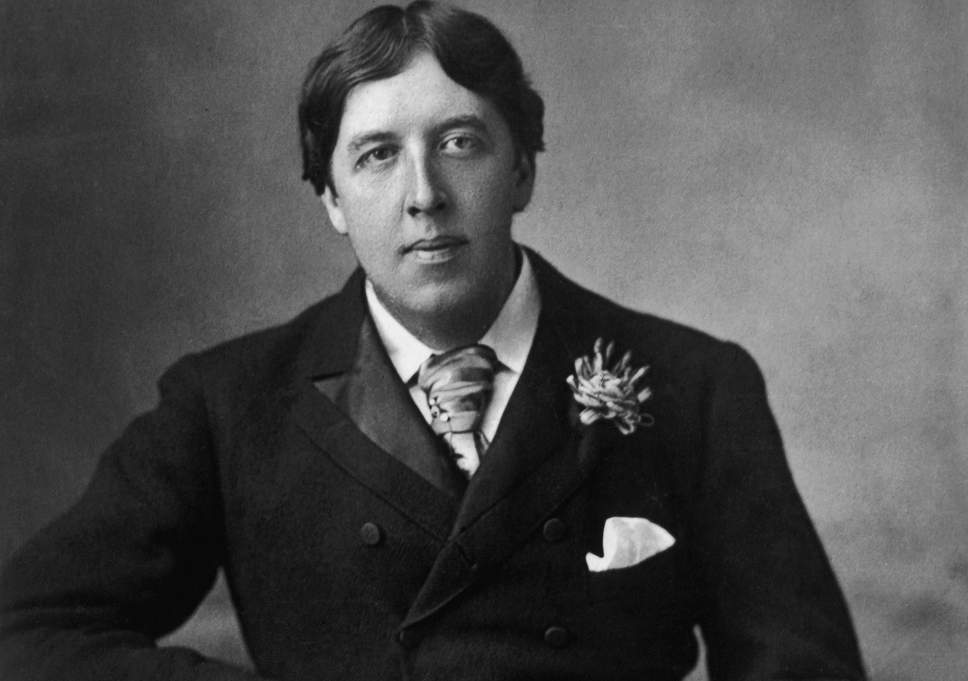
Not everyone was with the program, however. For one, many of these signals were pegged to the more effeminate interpretations of what it means to be a gay man — associations that have held firm since the outing of Oscar Wilde, who was known for being witty, effeminate, and boldly dressed. “Pansy, nellie, swish, queen: the fairy went by many names, but one thing universally acknowledged was that he wasn’t a ‘real man,'” writes Mosher. “Sexual theories of the time suggested that homosexuals were women in men’s bodies, unnaturally devoid of masculinity. But the easily recognizable identity proved useful for lonely men desperate to find each other. Gay men flocked to the stereotype like fairies to a flame. [Later], masculine gays felt alienated from an identity that didn’t represent them; early queer activists worried that the fairy stereotype gave the community a bad name.”
In many marginalized communities, there’s a running tension between those who think they should quietly assimilate and those who want to proclaim their identity to the world proudly. In the LGBTQ community, this tension came to a head during the Stonewall Riots, which were a series of protests against police raids at a popular Greenwich Village bar. The riots were violent, eventually ending with patrons burning down the watering hole, but the protests were also a watershed moment for the gay liberation movement. No longer would people quietly endure the stigma associated with their sexual and gender identities. Shame was replaced with a newfound sense of pride, and accommodationist goals were abandoned.
For gay men, reaching into their closet was one of the ways for them to come out of it. Fashion during this time was bolder, brasher, and unapologetic. Taking inspiration from transgender sex workers, some adopted what became known as “radical drag,” which blurred the line between masculine and feminine by combining the more extreme symbols of both. Gold lamé dresses were worn with work boots, pink tutus were paired with army jackets, and bearded faces were caked with make-up. “Taken off the stage and put on the street, what was once a camp performance became a political act, questioning what, if anything, gender meant,” Mosher explains. “By the ’70s, entire outfits were shouting, ‘We’re here, we’re queer, get used to it!'”
Radical drag never really crossed over into popular culture, mostly because it was too extreme, but it introduced a new kind of “genderfucking” that made people think about how they could “fuck with” traditional norms of gender identity, gender roles, and gender presentation. Those ideas would later be carried forward through the 1970s and ’80s punk movements. The New York Dolls, for example, was an influential protopunk band that performed in feminine dresses, long hair, and glitter-glam make-up. Their first two albums would later have a big influence on groups such as The Sex Pistols, Kiss, the Ramones, Guns N’ Roses, and the Smiths.
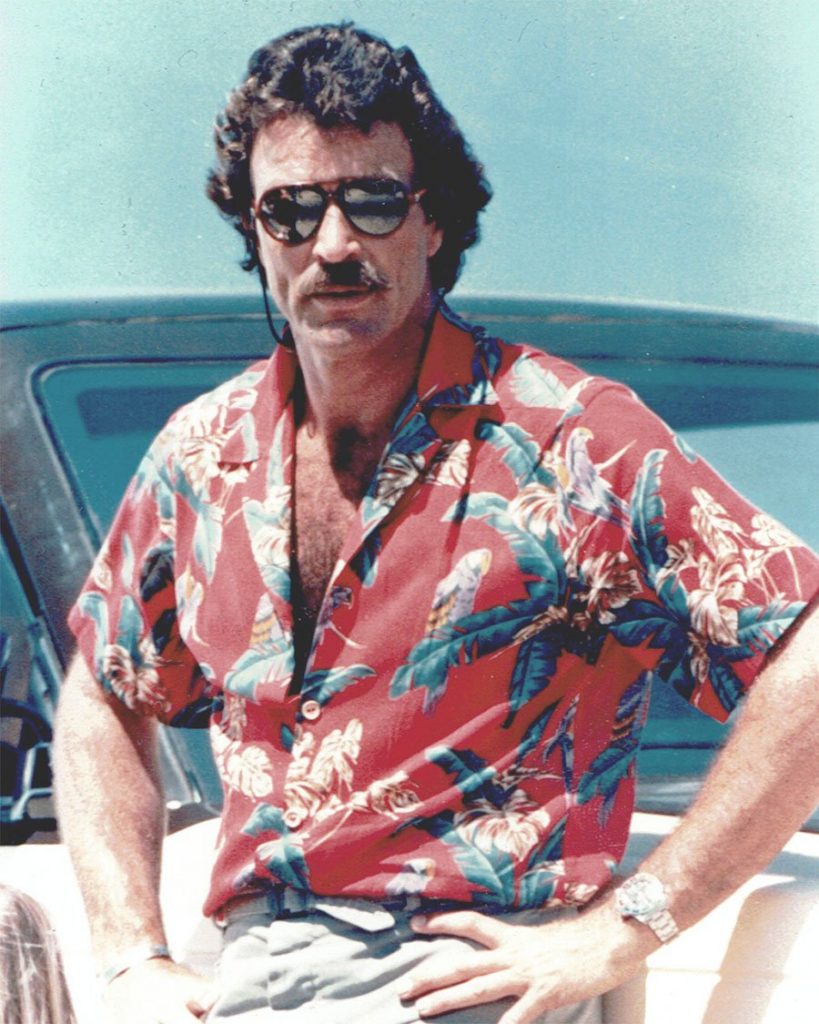
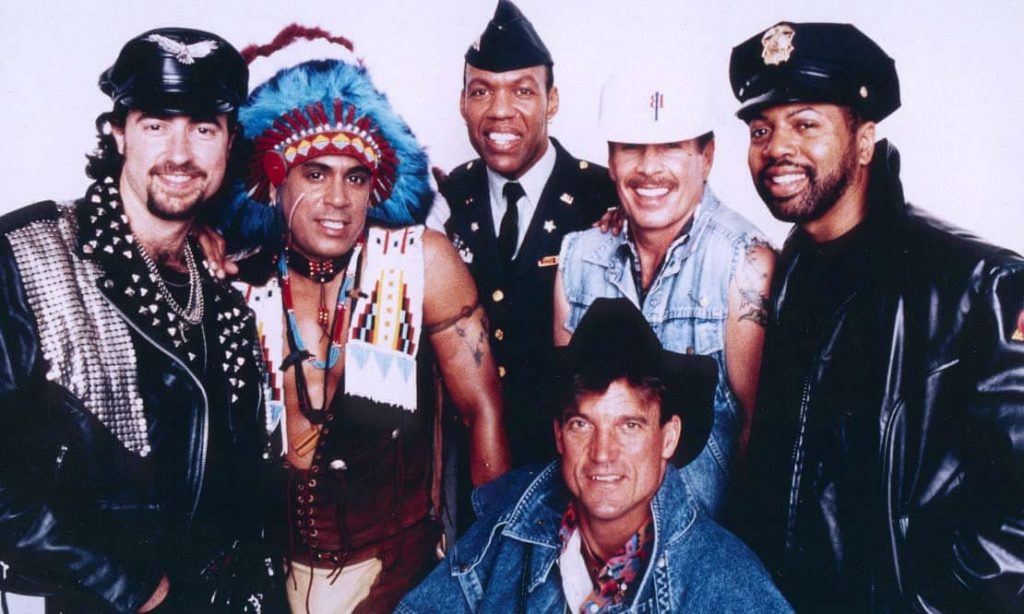
The Crossover Moments
Queer culture sometimes influences fashion in indirect ways. The dark, avant-garde designer Rick Owens, for instance, has looked to the more extreme edges of performance art, where he’s taken inspiration from the “purposefully surreal, absurdist and unsettling physical disposition of David Hoyle and Christeene Vale.” Other times, the lifting is more direct. Over the last hundred years, mainstream culture has siphoned from perfumed dandies, dillys, scallies, the new romantics, and fierce voguing divas.
Before Madonna released her 1990s hit single “Vogue,” which today endures as the fashion industry’s unofficial anthem, the original vogue queens were people in Harlem’s “House Ball” community. During the ’80s, people would “walk,” dance, and emulate other genders to compete for trophies at various drag balls. In the LBGTQ documentary Paris is Burning, one performer said: “Those balls are more or less our fantasy of being a superstar, like at the Oscars or being a runway on the model. A lot of those kids don’t have two of nothing. Some of them don’t even eat, they come to the balls starving. They sleep at Under 21 or the piers; they don’t have a home to go to. But they’ll go out and steal something to get dressed to go to the ball for that one night.” Just a couple of years after that scene was filmed, dancers introduced Madonna to the concept of “vogueing” at The Sound Factory Bar. She then used the concept for one of her most famous songs, imitating people who dreamt of one day being like her, as well as mainstreaming the dance style into popular culture.
One of the best examples of crossover is “The Clone Look.” During the 1970s, journalist Frances Fitzgerald combed through some of San Francisco’s gay neighborhoods to write about LGBTQ culture. One of the things she noticed is how everyone seemed to dress the same. “The Castroids,” she wrote of the people living on and around Castro Street, “were dressing with the care of Edwardian dandies, only the look was cowboy or bush pilot: tight blue jeans, plaid shirts, leather vests or bomber jackets, and boots. The new look was ‘gender-eccentricity.'”
Men who grew up thinking that being gay necessarily meant being effeminate found new representation through the traditional icons of manhood: the cowboy, the construction worker, the mechanic, the sailor, and the lumberjack. Whether they were in heavy denim and leather, athletic shorts and knee-high socks, a bushy handlebar mustache always completed the look. According to Cole, “gay men realized that it was fine to be overly masculine […] that sex and sexual freedom were something that they could freely embrace.”
While these styles aped straight culture, they were very much a gay aesthetic. “In the 1970s, gays were much more visible and less concerned about being recognized as gay,” writes Mosher. “Clones had taken the look of the working-class male and sexualized it, emphasizing muscles through tight t-shirts, and shapely buttocks through deliberately shrunken jeans. The clone look was, in fact, a deconstruction of the traditional male, a kind of ‘butch drag.’ By dressing like ‘real men,’ clones had discovered that masculinity was a performance with costumes no less contrived than the fairy’s tailored suits or the radical drag queens’ gowns. The clone look, the first style to say it was okay to be both gay and masculine, may have encouraged thousands of men to come out.”
If the look seems familiar, it’s because it would later find crossover success in the subsequent decade. The popularity of a brawny, mustachioed Tom Selleck in “Magnum PI” convinced straight men that they could have the same magnetism if they just wore slim jeans, a low-buttoned hibiscus print shirt, and a bushy mustache. “The clone look went mainstream in the ’80s, adopted by heterosexuals who apparently missed the irony of straight men dressing like gay men dressing like straight men. This, of course, killed the look for many gays.”
Today, many of these looks overlap. Gay and straight styles have intermingled through close association in bars and clubs. Craig Green, who won last year’s British Designer of the Year award, went to school at the famous Central Saint Martins to study fashion. For his senior dissertation, he wrote about how straight men copy gay style subcultures. “When I was younger, what I thought of as a very gay look was really a metrosexual thing, a bit Italian, clothes a tiny bit too tight, skinny jeans, tanned, tight T-shirt, worked out,” he told The Guardian. “Most of the men who dressed like that were straight. Gay men all seemed to be growing beards, too. It was a less specific time. You couldn’t really tell who was who anymore. Have we come to a melting point?”
Maybe there are still subtle style signals the rest of us are missing.







